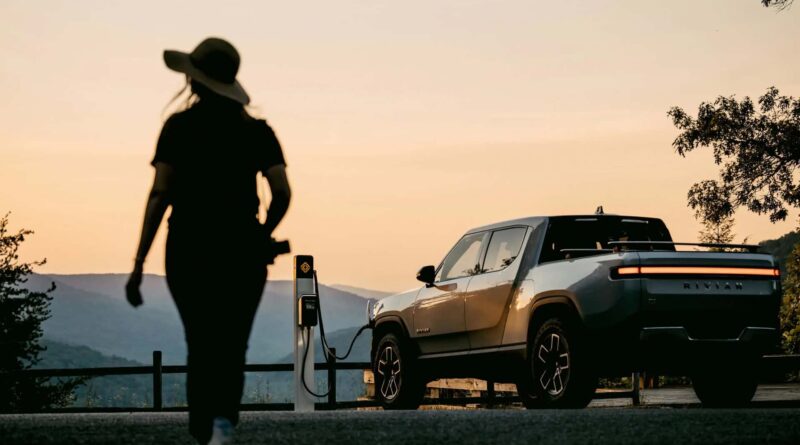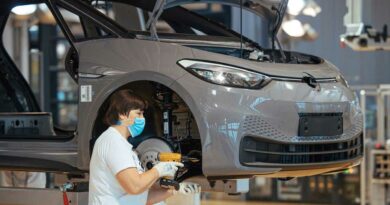Rivian Adventure Network Ends Free Charging. Here's How It Works Now
It’s no secret that Rivian would eventually charge drivers to quickly chug electrons when plugged in at a Rivian Adventure Network fast charger. The automaker made that clear back in April that it would eventually end free charging at its stations, and even warned owners last month of the impending change. Now, Rivian has officially begun to flip over some of its chargers to paid-only sessions.
Under the new paid model – which went live across the country on Wednesday – owners will either pay a flat fee per kilowatt-hour of power delivered to their vehicle or pay per minute.
The actual fee structure is dependent on the charger location and local regulations. Likewise, owners will also be responsible for fielding a per-minute idle fee to discourage owners from blocking a stall once their charging session has been completed.
But let’s use a hypothetical example. If Rivian is charging $0.36 per kWh, a Rivian R1T will cost between $38 and $54 to charge from fully depleted to 100%, depending on the configuration of the truck’s battery pack. In a more real-world scenario, charging from 10% to 80% will run between $26 and $38. But given that Rivian’s pricing won’t be flat across its entire network, this is just an estimation.
The Rivian Adventure Network currently has 30 fast-charging locations across the U.S., each one sporting enough chargers to plug in six different vehicles. Rivian originally planned to have 600 different fast-charging locations and 10,000 separate Level 2 chargers (called Waypoints) by the end of 2023 when it was announced two years ago. Presently, most Adventure Network chargers are capable of fast-charging at speeds between 120 and 200 kilowatts, though some are reportedly planned to deliver upwards of 300 kW. Waypoints are destination chargers limited to Level 2 speeds, offering just 11.5 kW of charge.
The Adventure Network is also currently a Rivian-exclusive charging network offering a Tesla-like payment method: simply plug in and it bills your account. However, the automaker has made it clear that it will eventually open up its chargers to all makes and models at a later date – though changes in the industry may complicate things a bit.
Despite Rivian confirming to InsideEVs that the paid model went live yesterday, some consumers say that not all chargers have switched over to the new paid. Owners are documenting which chargers are still free on Rivian Forums, where they are also calling on Rivian to build out more chargers in its network to meet owner demand.
Rivian has recently announced its plans to move to install Tesla’s North American Charging Standard (NACS) connector inlet in its R1T and R1S from 2024, Rivian Owners Signal Resounding Support For Tesla NACS Integration. That means reworking its existing and future infrastructure to support NACS. And if it wants to tap into federal incentives offered by the Inflation Reduction Act, Rivian must also ensure that it meets certain other requirements when deploying new charging stations, something that may be delaying the installation of chargers to meet its goal of 600 sites nationwide.
Rivian’s charging network is still rather small, and with the switch to NACS, new Rivian owners will soon have access to more than 12,000 new Tesla supercharging locations, which in itself seems significantly more valuable than Rivian meeting its goal of expanding the RAN in a timely manner.
That being said, building out additional fast charging networks, especially those that offer brand-agnostic charging experiences (like Rivian plans to in the future), is crucial to the success of EVs in America. If a company makes it easy to charge, owners of combustion-powered vehicles may be more inclined to consider switching to battery-powered vehicles. And now that Rivian is charging owners, it can begin putting that money back into the charging network to expand it even further.
Source: Read Full Article




